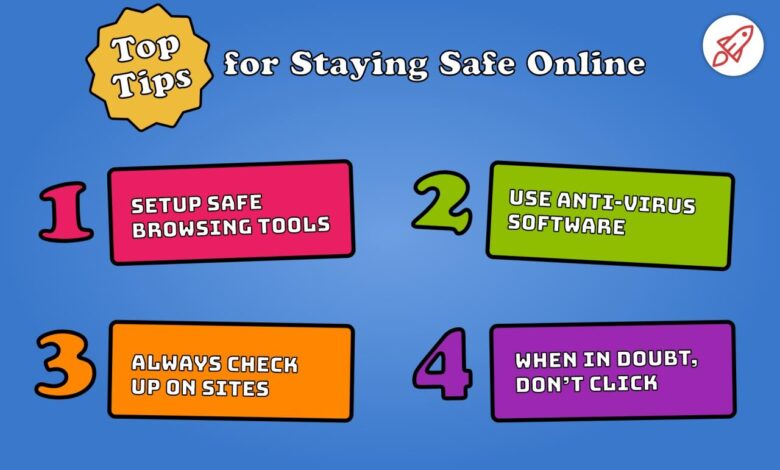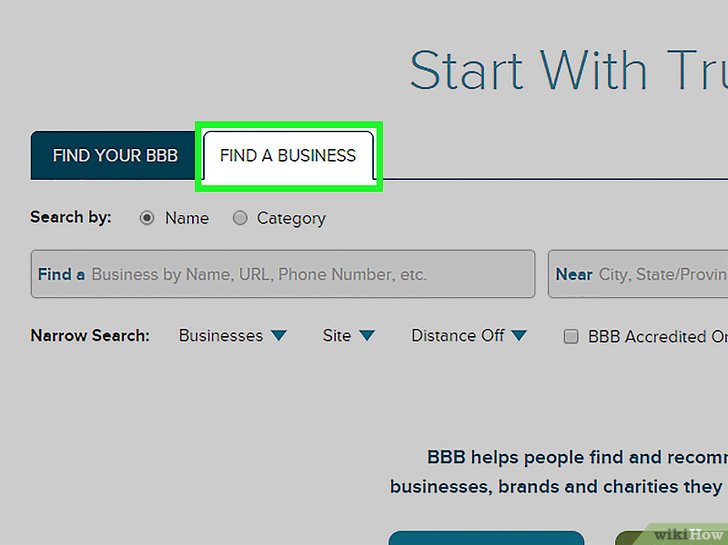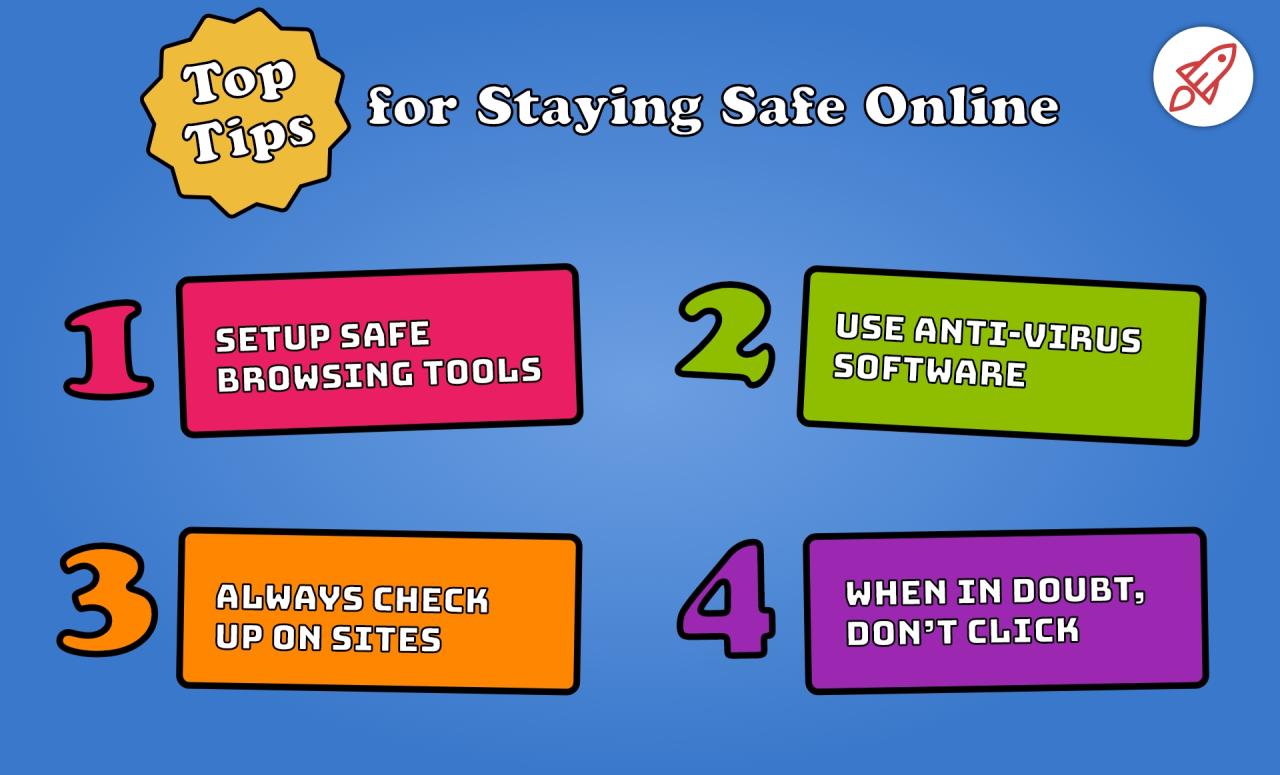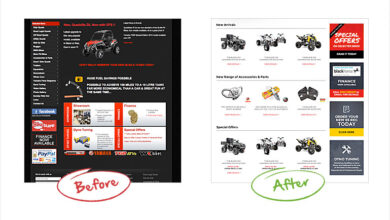
Are You Running a Valid Website?
Are you running a valid website? It’s a question more website owners should be asking themselves. A seemingly simple site can actually harbor hidden vulnerabilities, legal pitfalls, and user experience nightmares. From ensuring your site’s security to complying with data privacy regulations and delivering a smooth, accessible experience, there’s a lot more to running a successful website than just pretty visuals and catchy content.
Let’s dive into what truly makes a website “valid” and how you can make sure yours measures up.
This post will explore the key aspects of building and maintaining a valid website, covering everything from technical specifications and legal compliance to user experience and content accuracy. We’ll look at common issues, best practices, and practical steps you can take to ensure your online presence is not only functional but also trustworthy, secure, and legally sound. Think of it as a comprehensive website health check – let’s see how your site stacks up!
Website Security Aspects

Source: wikihow.com
Website security is paramount for maintaining a valid and trustworthy online presence. A website riddled with vulnerabilities not only risks losing user data but also damages its reputation, potentially leading to legal repercussions and financial losses. Ignoring security best practices can quickly transform a promising online venture into a liability.
Common Website Vulnerabilities
Several common vulnerabilities can compromise a website’s security and validity. These weaknesses often stem from outdated software, poor coding practices, and a lack of regular security audits. Exploiting these vulnerabilities can allow attackers to gain unauthorized access, steal sensitive information, or even take control of the entire website. Examples include SQL injection, cross-site scripting (XSS), and cross-site request forgery (CSRF).
SQL injection allows attackers to manipulate database queries, potentially revealing or modifying sensitive data. XSS attacks inject malicious scripts into a website, allowing attackers to steal cookies or redirect users to phishing sites. CSRF exploits the trust a website has in a user’s browser to perform unwanted actions. These vulnerabilities often result in a website being flagged as unsafe by browsers and search engines, diminishing its validity and user trust.
Security Best Practices
Implementing robust security measures is crucial for ensuring website validity and user trust. A multi-layered approach is necessary, combining technical safeguards with sound security policies.
| Category | Best Practice | Explanation | Example |
|---|---|---|---|
| Software Updates | Regularly update CMS, plugins, and themes. | Outdated software contains known vulnerabilities that attackers can exploit. | Updating WordPress to the latest version and ensuring all plugins are up-to-date. |
| Strong Passwords & Authentication | Use strong, unique passwords and implement multi-factor authentication (MFA). | Strong passwords make brute-force attacks more difficult, while MFA adds an extra layer of security. | Using a password manager to generate and store complex passwords and enabling two-factor authentication with Google Authenticator. |
| Secure Coding Practices | Follow secure coding guidelines to prevent vulnerabilities like SQL injection and XSS. | Properly sanitizing user inputs and escaping special characters can significantly reduce the risk of attacks. | Using parameterized queries instead of directly embedding user input into SQL queries. |
| Regular Backups | Regularly back up website files and databases to a secure location. | In case of a security breach or data loss, backups allow for quick recovery. | Using a cloud-based backup service like Amazon S3 or Backblaze. |
| HTTPS | Use HTTPS to encrypt communication between the website and users. | HTTPS protects sensitive data transmitted between the website and the user’s browser. | Obtaining an SSL certificate from a trusted Certificate Authority (CA). |
| Security Audits | Regularly conduct security audits to identify and address vulnerabilities. | Professional audits can uncover hidden weaknesses that automated tools might miss. | Hiring a penetration testing company to assess the website’s security. |
Impact of Outdated Software and Plugins
Outdated software and plugins pose a significant threat to website security and validity. These outdated components often contain known vulnerabilities that attackers actively exploit. Failure to update them leaves the website exposed to various attacks, including malware injection, data breaches, and complete website compromise. This can lead to a loss of user trust, reputational damage, and legal consequences.
For instance, an outdated WordPress plugin might contain a vulnerability that allows attackers to gain administrative access to the website, potentially leading to the installation of malicious code or the deletion of critical data.
Examples of Phishing and Malware Distribution
Phishing attempts often leverage compromised websites to distribute malicious links or attachments. These websites might appear legitimate but redirect users to fake login pages designed to steal credentials. Similarly, malware can be distributed through seemingly harmless downloads or advertisements on compromised websites. For example, a website seemingly offering free software might actually be distributing malware that steals personal information or takes control of the user’s computer.
Another example could be a seemingly innocuous advertisement that redirects the user to a website that installs malware on their device without their knowledge or consent. These malicious activities directly impact the validity of the website, rendering it untrustworthy and potentially harmful to its users.
So, you’re asking yourself, “Am I running a valid website?” A crucial part of that is making sure your content is easily discoverable. One fantastic way to boost visibility is through video marketing, and I highly recommend checking out this guide on getting it on with youtube to learn how to leverage the platform. Ultimately, a strong YouTube presence can significantly improve your website’s overall health and reach, helping answer that initial question of validity.
Legal and Regulatory Compliance
Running a website, even a seemingly simple one, involves navigating a complex legal landscape. Ignoring these legal aspects can lead to significant problems, from hefty fines to reputational damage and even legal action. Understanding and adhering to relevant laws and regulations is crucial for maintaining a valid and trustworthy online presence.Data privacy regulations are a cornerstone of website legality.
These laws dictate how you collect, store, use, and protect the personal information of your website visitors. Failure to comply can result in severe penalties.
Data Privacy Regulations: GDPR and CCPA
The General Data Protection Regulation (GDPR) in the European Union and the California Consumer Privacy Act (CCPA) in California are two prominent examples of data privacy regulations. GDPR applies to any website processing personal data of EU residents, regardless of the website’s location. CCPA similarly protects the personal information of California residents. Both regulations grant individuals rights concerning their data, including the right to access, rectify, erase, and restrict the processing of their personal data.
Websites must implement appropriate technical and organizational measures to ensure data security and comply with these rights. For example, a website must clearly state its data collection practices in a privacy policy, obtain explicit consent for data processing, and provide mechanisms for users to exercise their data rights. Non-compliance can result in substantial fines, potentially reaching millions of euros under GDPR.
Terms of Service and Privacy Policies
Terms of Service (ToS) and Privacy Policies are legally binding documents outlining the rules and regulations governing website usage and data handling. A comprehensive ToS clearly defines the acceptable use of the website, intellectual property rights, disclaimers of liability, and dispute resolution mechanisms. A well-drafted Privacy Policy transparently explains how user data is collected, used, shared, and protected.
These documents are essential for establishing a legally sound basis for website operation and protecting both the website owner and the users. The absence of, or inadequacies in, these policies can expose the website to legal challenges and undermine user trust. For instance, a website lacking a clear privacy policy might face accusations of violating data privacy laws, while a vague ToS could lead to disputes over user conduct and liability.
Legal Ramifications of Operating an Invalid Website
Operating an invalid website, one that fails to comply with relevant laws and regulations, exposes the website owner to a range of legal ramifications. These can include lawsuits from users alleging data breaches or violations of their rights, fines imposed by regulatory bodies for non-compliance with data privacy laws or other regulations (such as copyright infringement), and reputational damage leading to loss of business and customer trust.
Furthermore, the website might be subject to legal orders to cease operation or remove infringing content. The severity of these consequences varies depending on the nature and extent of the non-compliance.
Legal Checklist for Website Validity and Compliance, Are you running a valid website
Before launching a website, a thorough legal checklist is crucial. This includes:
- Reviewing and understanding all applicable data privacy regulations (GDPR, CCPA, etc.) relevant to your target audience.
- Developing comprehensive and legally sound Terms of Service and Privacy Policies.
- Implementing appropriate technical and organizational measures to ensure data security and compliance with data privacy regulations.
- Obtaining necessary consents for data processing.
- Regularly reviewing and updating your Terms of Service and Privacy Policies to reflect changes in legislation and best practices.
- Ensuring compliance with intellectual property laws, including copyright and trademark regulations.
- Establishing a clear process for handling user complaints and data breach notifications.
Website Functionality and User Experience
A website’s success hinges not only on its security and legal compliance but also on its functionality and the overall user experience it provides. A well-designed website is intuitive, easy to navigate, and provides a seamless experience for the user, encouraging engagement and return visits. Conversely, a poorly designed website can frustrate users, leading to high bounce rates and a damaged brand reputation.
This section explores the key aspects of website functionality and user experience, highlighting best practices and common pitfalls.
User Flow Diagram
A user flow diagram visually represents the steps a user takes to achieve a specific goal on a website. Imagine a simple e-commerce site. The diagram would start with the user landing on the homepage. From there, they might browse product categories, click on a specific product, add it to their cart, proceed to checkout, enter their shipping and payment information, and finally, receive an order confirmation.
Each step would be represented by a box or node, with arrows indicating the flow between steps. Alternative paths, such as abandoning the cart or returning to the product page, would also be shown. This visual representation helps designers identify potential friction points and optimize the user journey for maximum efficiency and satisfaction. A well-designed user flow diagram ensures a clear and logical path for users, minimizing confusion and maximizing conversions.
Common Usability Issues
Several common usability issues can significantly detract from a website’s effectiveness. These issues can make a website feel “invalid” in the eyes of users, even if it technically functions correctly.
- Poor Navigation: A confusing or illogical site structure makes it difficult for users to find what they need. This often manifests as a lack of clear menus, inconsistent labeling, or a deep nesting of pages.
- Inconsistent Design: A jarring visual experience with inconsistent fonts, colors, and layouts creates a sense of unprofessionalism and disrupts the user’s flow.
- Lack of Clear Calls to Action (CTAs): Users need clear guidance on what to do next. Without prominent and well-designed CTAs, they may become disengaged and leave the site.
- Slow Loading Times: Long load times lead to frustration and high bounce rates. Users expect instant gratification, and slow websites simply don’t meet this expectation.
- Poor Search Functionality: A broken or ineffective search bar renders a significant portion of the website inaccessible to users.
- Inaccessible Content: Websites must be accessible to users with disabilities. This includes providing alternative text for images, ensuring sufficient color contrast, and supporting keyboard navigation.
Comparison of Valid and Invalid Website User Experiences
A valid website offers a seamless and enjoyable user experience. Navigation is intuitive, content is easily accessible, and the overall design is visually appealing and consistent. Users can quickly find what they need and accomplish their goals without frustration. In contrast, an invalid website is characterized by poor navigation, confusing layouts, broken links, slow loading times, and inaccessible content.
Users struggle to find information, become frustrated, and are likely to abandon the site. The difference in user experience is stark: one fosters engagement and loyalty, while the other drives users away. For example, Amazon provides a prime example of a valid website, while a website with numerous broken links and slow loading times, like a poorly maintained personal blog, serves as a negative example.
Impact of Broken Links, Slow Loading Times, and Poor Accessibility
Broken links, slow loading times, and poor accessibility significantly impact website validity. Broken links disrupt the user journey, leading to frustration and a sense of distrust. Slow loading times cause users to abandon the site before it even fully loads, impacting conversion rates and overall engagement. Poor accessibility excludes a significant portion of the population, violating principles of inclusivity and potentially leading to legal repercussions.
These issues not only damage user experience but also negatively impact , search engine rankings, and overall brand reputation. A website with these problems is perceived as unprofessional, unreliable, and ultimately, invalid in the eyes of many users.
Technical Aspects of Website Validity: Are You Running A Valid Website
Building a website that’s not only visually appealing but also technically sound is crucial for success. A technically valid website ensures smooth functionality, better search engine optimization (), and a positive user experience. This section delves into the technical underpinnings that contribute to a website’s validity.
Website Hosting and Domain Registration
Website hosting and domain registration are fundamental to a website’s online presence and validity. Hosting provides the server space where your website’s files reside, making them accessible to users worldwide. The domain name, registered through a registrar, acts as your website’s address on the internet. Without both, your website simply won’t exist online. A reliable hosting provider ensures uptime and speed, while a properly registered domain name guarantees your website’s unique identity and prevents confusion with other sites.
For instance, a website hosted on a server with frequent downtime will be considered invalid in terms of user accessibility, while a website with a poorly chosen or unregistered domain name will be difficult to find and may lack credibility.
HTTP Status Codes
HTTP status codes are three-digit numerical codes that indicate the status of a client’s request to a web server. Understanding these codes is vital for diagnosing website issues and ensuring validity. Some common codes and their implications include:
| HTTP Status Code | Meaning | Impact on Website Validity |
|---|---|---|
| 200 OK | The request was successful. | Indicates a functioning website. |
| 404 Not Found | The requested resource was not found on the server. | Suggests broken links or incorrect URLs, impacting website validity and user experience. |
| 500 Internal Server Error | The server encountered an unexpected condition that prevented it from fulfilling the request. | Signifies a server-side problem, potentially rendering the website inaccessible and invalid. |
| 301 Moved Permanently | The requested resource has been permanently moved to a new location. | Generally doesn’t impact validity if implemented correctly through server redirects. |
Website Structure (HTML, CSS, JavaScript)
The underlying structure of a website, built using HTML, CSS, and JavaScript, significantly impacts its validity and functionality. HTML forms the content structure, CSS styles the visual presentation, and JavaScript adds interactivity. Clean, well-structured code ensures proper rendering in browsers, improves , and enhances user experience. For example, invalid HTML might lead to a website that displays incorrectly or is inaccessible to assistive technologies.
Similarly, inefficient CSS can slow down page load times, negatively impacting the user experience. JavaScript errors can cause malfunctions and prevent certain features from working correctly. A well-structured website, using semantic HTML, efficient CSS, and robust JavaScript, is a valid and functional website.
Comparison of Website Builders
Different website builders offer varying levels of control and impact on website validity.
| Website Builder | Ease of Use | Control Over Code | Impact on Website Validity |
|---|---|---|---|
| Wix | High | Low | Generally produces valid websites, but limited customization may restrict certain functionalities. |
| WordPress | Medium | High (with plugins and themes) | Highly customizable; validity depends on the chosen theme and plugins, requiring careful selection. |
| Squarespace | High | Low | Similar to Wix, generally produces valid websites with limited code customization. |
| Webflow | Medium | High | Allows for extensive customization with visual code editing, enabling greater control over website validity. |
Content and Information Accuracy

Source: broadbandsearch.net
Maintaining accurate and reliable information is paramount for a successful and trustworthy website. Inaccurate or misleading content can severely damage a website’s reputation, erode user trust, and even lead to legal repercussions. This section explores the critical aspects of ensuring content accuracy and preventing the spread of misinformation.Misleading or inaccurate information can take many forms, significantly impacting a website’s credibility.
For example, a website selling health supplements might falsely claim that a product cures a specific disease, a practice that is both unethical and potentially illegal. Similarly, a news site publishing unsubstantiated rumors or biased reporting without proper attribution could damage its reputation and mislead its readers. A travel website displaying outdated or incorrect information about flight schedules or hotel availability would frustrate users and harm its business.
These are just a few examples; the possibilities are endless and the consequences can be severe.
Examples of Misleading or Inaccurate Information
Misleading information can manifest in various ways. Outdated information, such as old prices or product specifications, can be just as problematic as outright false claims. Presenting statistics without proper sourcing or context can also be misleading, creating a false impression. For instance, selectively choosing data points to support a particular narrative while ignoring contradictory evidence is a form of manipulation.
Another example is the use of images or videos that have been manipulated or taken out of context to support a false claim. These actions not only mislead users but also damage the credibility of the website.
Ethical Considerations Related to Content Validity and User Trust
The ethical responsibility of website owners extends to ensuring the accuracy and validity of the information they publish. Providing false or misleading information is unethical and can severely damage a website’s reputation and the trust users place in it. This lack of trust can have significant repercussions, ranging from lost revenue and decreased user engagement to legal action.
Ethical website management requires a commitment to transparency, accuracy, and responsible reporting. Prioritizing user trust over short-term gains is crucial for long-term success.
Methods for Fact-Checking and Verifying Information
Robust fact-checking is essential for maintaining content accuracy. This involves verifying information from multiple reliable sources, such as reputable journals, government agencies, and established news organizations. Cross-referencing information from different sources helps to identify inconsistencies and potential inaccuracies. For statistical data, checking the methodology and source of the data is crucial. Using fact-checking websites and tools can also assist in verifying information.
When in doubt, it is always better to err on the side of caution and seek clarification from reliable sources before publishing information.
Strategies for Maintaining Content Accuracy and Preventing the Spread of Misinformation
Implementing a rigorous content review process is a key strategy for preventing the spread of misinformation. This involves having multiple individuals review content before publication, ensuring consistency and accuracy. Regularly updating content to reflect current information is also crucial, especially for dynamic areas such as news or product specifications. Establishing clear guidelines for content creation and fact-checking can help maintain consistency and accuracy.
Transparency about sources and methodology further enhances credibility and builds user trust. Finally, proactively addressing and correcting any inaccuracies or misinformation that may arise is vital in maintaining a positive reputation and fostering user trust.
Website Accessibility
Building a website that’s truly useful means making it accessible to everyone, regardless of their abilities. Website accessibility isn’t just a matter of good ethics; it’s also crucial for ensuring your website’s validity and reaching a wider audience. A website that excludes users with disabilities is, by definition, a less effective website. Accessibility features directly contribute to a positive user experience and improve your website’s overall functionality.
Website accessibility and validity are intrinsically linked. A valid website, built according to W3C standards, provides a solid foundation for accessibility. Semantic HTML, for instance, allows assistive technologies like screen readers to interpret the content correctly, making it understandable for users with visual impairments. A website that is poorly structured or uses invalid HTML will inevitably be more difficult, if not impossible, for people with disabilities to use effectively.
Accessibility Features for Inclusive Websites
Implementing accessibility features is vital for creating an inclusive online experience. These features don’t just benefit users with disabilities; they often improve usability for everyone.
Several key features should be considered:
- Alternative text for images (alt text): Provides a textual description of images for screen readers and users with slow internet connections. For example, instead of `
 `, use `
`, use ` `. The alt text should accurately convey the image’s purpose and content.
`. The alt text should accurately convey the image’s purpose and content. - Keyboard navigation: Ensuring all interactive elements (buttons, links, forms) are accessible via keyboard navigation is essential for users who cannot use a mouse. This involves proper tab order and focus management.
- Sufficient color contrast: Using enough contrast between text and background colors improves readability for users with low vision. Tools are available online to check color contrast ratios, ensuring they meet WCAG guidelines.
- Captions and transcripts for multimedia: Providing captions for videos and transcripts for audio content makes the information accessible to deaf or hard-of-hearing users.
- Clear and consistent headings: Using proper heading tags (H1-H6) in HTML structures the content logically and helps assistive technologies navigate the page. This is particularly beneficial for users with cognitive disabilities.
- Semantic HTML: Using appropriate HTML elements (e.g., `
Accessibility Guidelines and Standards
Adhering to established accessibility guidelines ensures your website meets minimum standards for inclusivity. The most widely recognized standard is the Web Content Accessibility Guidelines (WCAG).
WCAG provides a comprehensive set of guidelines, broken down into four principles:
- Perceivable: Information and user interface components must be presentable to users in ways they can perceive.
- Operable: User interface components and navigation must be operable.
- Understandable: Information and the operation of the user interface must be understandable.
- Robust: Content must be robust enough that it can be interpreted reliably by a wide variety of user agents, including assistive technologies.
WCAG is further categorized into levels of conformance (A, AA, AAA), representing increasing levels of accessibility.
Creating Accessible Content with HTML
Using semantic HTML and appropriate attributes is key to creating accessible content. For example:
Instead of:
Use:
This is a link to my homepage.
The aria-label attribute provides additional context for screen readers, even if the link text is descriptive enough. Similarly, proper use of heading tags, lists, and other semantic elements greatly improves accessibility.
Consider this example of a list:
- Item 1
- Item 2
- Item 3
This is preferable to using divs or other non-semantic elements to represent a list, as screen readers and other assistive technologies can easily interpret this structure.
Summary
Building a truly valid website is an ongoing process, not a one-time fix. It requires vigilance, attention to detail, and a commitment to providing a positive experience for your users. By understanding the technical, legal, and ethical considerations Artikeld here, you can proactively identify and address potential issues, ultimately creating a website that is not only successful but also responsible and trustworthy.
Remember, a valid website is more than just a pretty face; it’s a foundation built on security, compliance, and a commitment to your audience.
Questions and Answers
What are the consequences of running an invalid website?
Consequences can range from loss of user trust and decreased search engine ranking to legal penalties and security breaches. It can severely impact your brand reputation and bottom line.
How often should I update my website’s plugins and themes?
Regularly! Ideally, update them as soon as new versions are released to patch security vulnerabilities and improve functionality. Always back up your site before major updates.
What’s the best way to ensure my website is accessible?
Follow WCAG guidelines, use alt text for images, provide clear headings, ensure sufficient color contrast, and test your site with assistive technologies.
How can I improve my website’s loading speed?
Optimize images, use a caching plugin, minimize HTTP requests, and choose a reliable hosting provider. Tools like Google PageSpeed Insights can help you identify areas for improvement.





